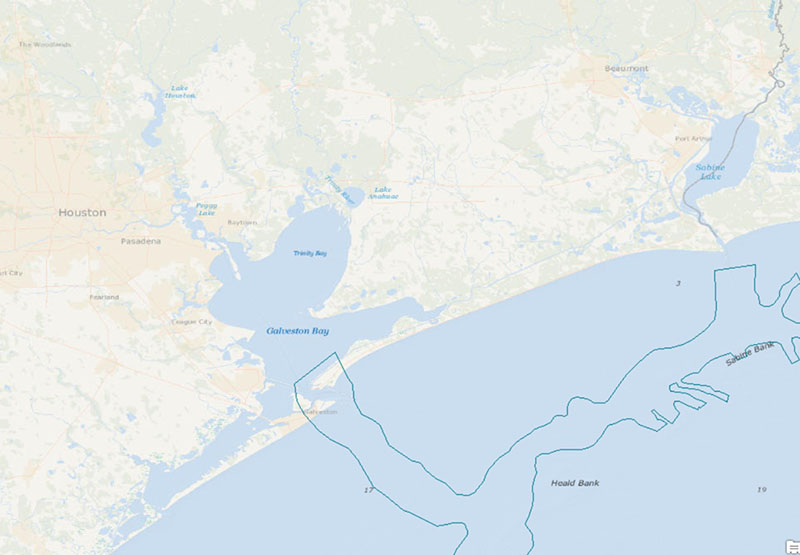
By Amanda Evans, Gray & Pape, Inc.
In 2019, our project team spent two weeks offshore in the Gulf of Mexico collecting data to help us answer questions about areas of the continental shelf that were once exposed as dry land. Throughout time, global sea level has risen and fallen, alternately covering and exposing the land. Today, the Gulf of Mexico is largely known for its shrimping, fishing, and extensive offshore oil and gas development, but evidence of the earliest Gulf coast inhabitants could be preserved, buried under sediment and sea. But on a continental shelf where approximately 40 million acres could have been dry land in the last 12,000 years, where do you start looking?
In our Mission Plan from 2019, we used the analogy of trying to solve a jigsaw puzzle using only a handful of pieces to describe how archaeologists study the past. Building on existing work, we targeted a 606-square-kilometer (234-square-mile) area between the Sabine River and Galveston Bay to search for evidence of relict river valleys buried below the modern seafloor.

Figure 1: Geological mapping shows the broad extents of the former, incised Sabine and Trinity/San Jacinto River Valleys (after Simms et al., 2008). Image courtesy of Paleolandscapes and the ca. 8,000 BP Shoreline of the Gulf of Mexico Outer Continental Shelf 2020. Download larger version (jpg, 344 KB).
We collected over 2,400 kilometers (1,491 miles) worth of data over our targeted search areas, which included subbottom profiler, parametric sonar, magnetometer, and bathymetry data. As we prepare to start fieldwork this year, our objective is to collect sediment cores that we will use to reconstruct a more accurate picture of what life would have been like along these now-submerged landscapes.
Our project is not the first to consider that archaeological sites may be buried and underwater on the continental shelf. Previous research in the 1970s1, 1980s2, and 2000s3 has identified what to look for and the best methods to use when looking for sites. In fact, 106 sediment cores have been collected specifically for archaeology offshore of Texas and Louisiana.

Figure 2: A split core, recovered in 2010, shows the transition from modern marine sediment (top right), through the Pleistocene clay (lower left). Image courtesy of Paleolandscapes and the ca. 8,000 BP Shoreline of the Gulf of Mexico Outer Continental Shelf 2020. Download larger version (jpg, 401 KB).
It sounds like a lot, but this is the entire data set for approximately 40 million acres of seafloor. On land, archaeologists would start searching an area by digging shovel tests. The cores give us similar information, but the 106 cores already collected cover the same surface area as only 11 shovel tests. During our 2020 fieldwork, we’ll be collecting more sediment cores to add to the offshore data set. We chose the locations for our cores from the combined remote sensing data we collected in 2019. We’re targeting landforms associated with incised river valleys, where early people would have accessed freshwater and other necessary resources. The sediment we collect will be sampled and tested to extract information about the environment that people would have been living in, information about plant and animal species in the area, soil conditions and related climate information, and radiocarbon dates to pinpoint more closely when these landforms could have been populated.
Our objective is to add more information about the environment in which early Gulf coast inhabitants would have lived. There isn’t enough information yet to let us ask questions about past human behavior. We need to build a better picture of what life would have been like, and then we can start to ask questions about the people that would have been there.
1 Coastal Environments, Inc. (CEI)
2 Pearson, C. E., D. B. Kelley, R. A. Weinstein, and S. M. Gagliano
3 Evans, A.M.
Full reference for Simms et al. 2008 from Figure 1
Simms, A.R., J.B. Anderson, K.T. Milliken, Z.P. Taha, and J.S. Wellner